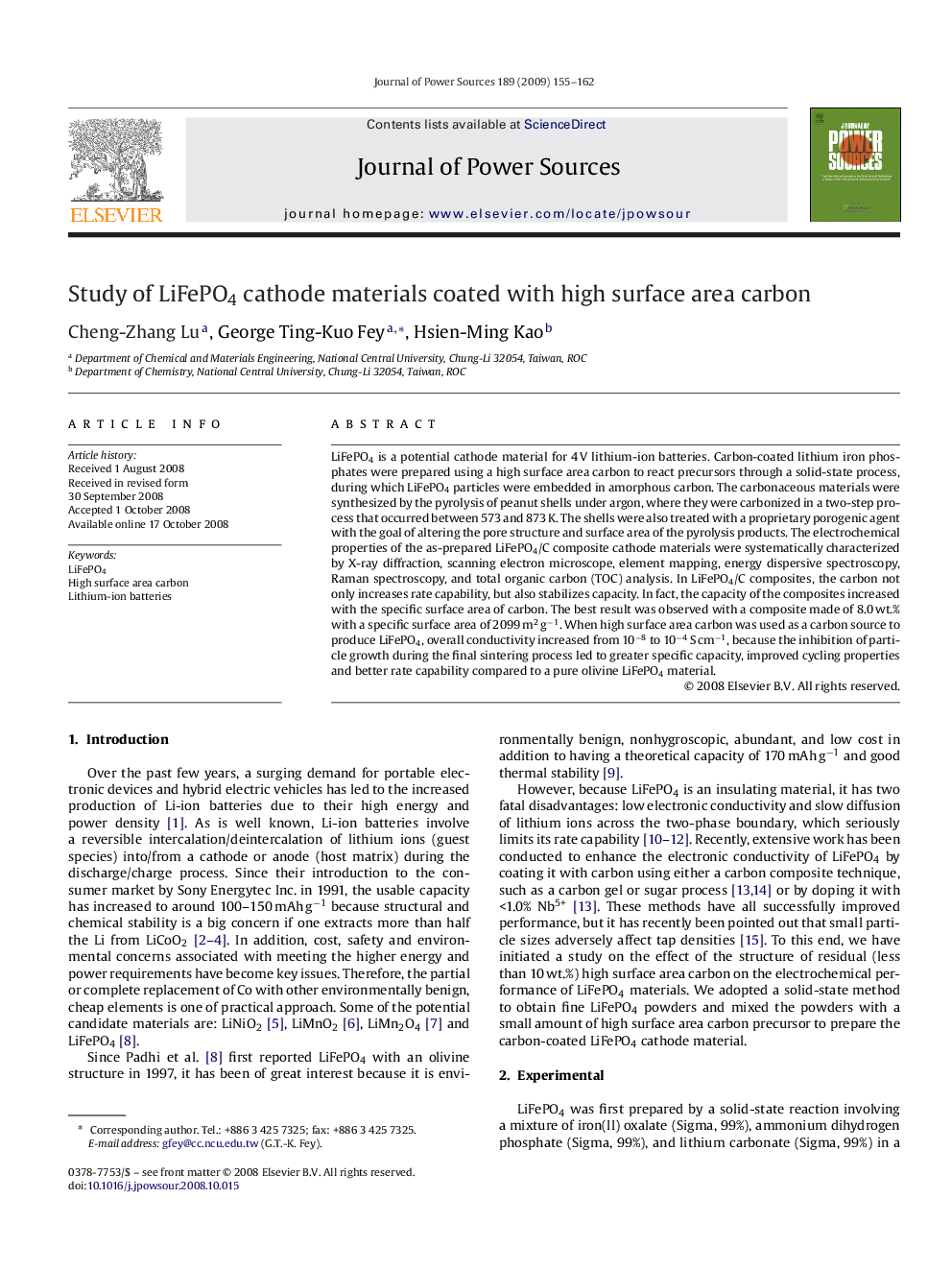| Article ID | Journal | Published Year | Pages | File Type |
|---|---|---|---|---|
| 1291167 | Journal of Power Sources | 2009 | 8 Pages |
LiFePO4 is a potential cathode material for 4 V lithium-ion batteries. Carbon-coated lithium iron phosphates were prepared using a high surface area carbon to react precursors through a solid-state process, during which LiFePO4 particles were embedded in amorphous carbon. The carbonaceous materials were synthesized by the pyrolysis of peanut shells under argon, where they were carbonized in a two-step process that occurred between 573 and 873 K. The shells were also treated with a proprietary porogenic agent with the goal of altering the pore structure and surface area of the pyrolysis products. The electrochemical properties of the as-prepared LiFePO4/C composite cathode materials were systematically characterized by X-ray diffraction, scanning electron microscope, element mapping, energy dispersive spectroscopy, Raman spectroscopy, and total organic carbon (TOC) analysis. In LiFePO4/C composites, the carbon not only increases rate capability, but also stabilizes capacity. In fact, the capacity of the composites increased with the specific surface area of carbon. The best result was observed with a composite made of 8.0 wt.% with a specific surface area of 2099 m2 g−1. When high surface area carbon was used as a carbon source to produce LiFePO4, overall conductivity increased from 10−8 to 10−4 S cm−1, because the inhibition of particle growth during the final sintering process led to greater specific capacity, improved cycling properties and better rate capability compared to a pure olivine LiFePO4 material.
